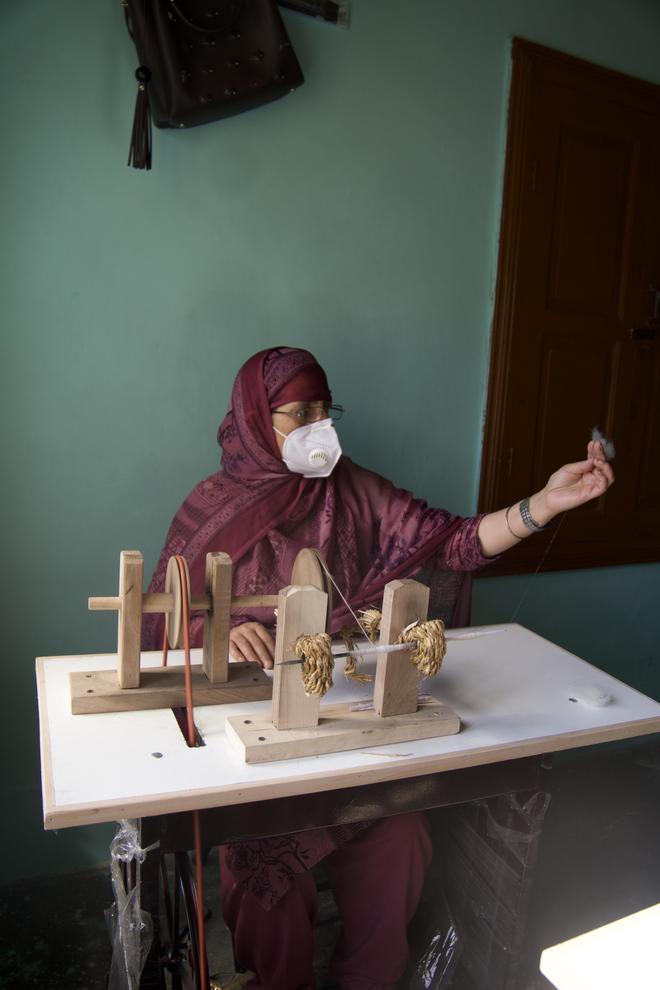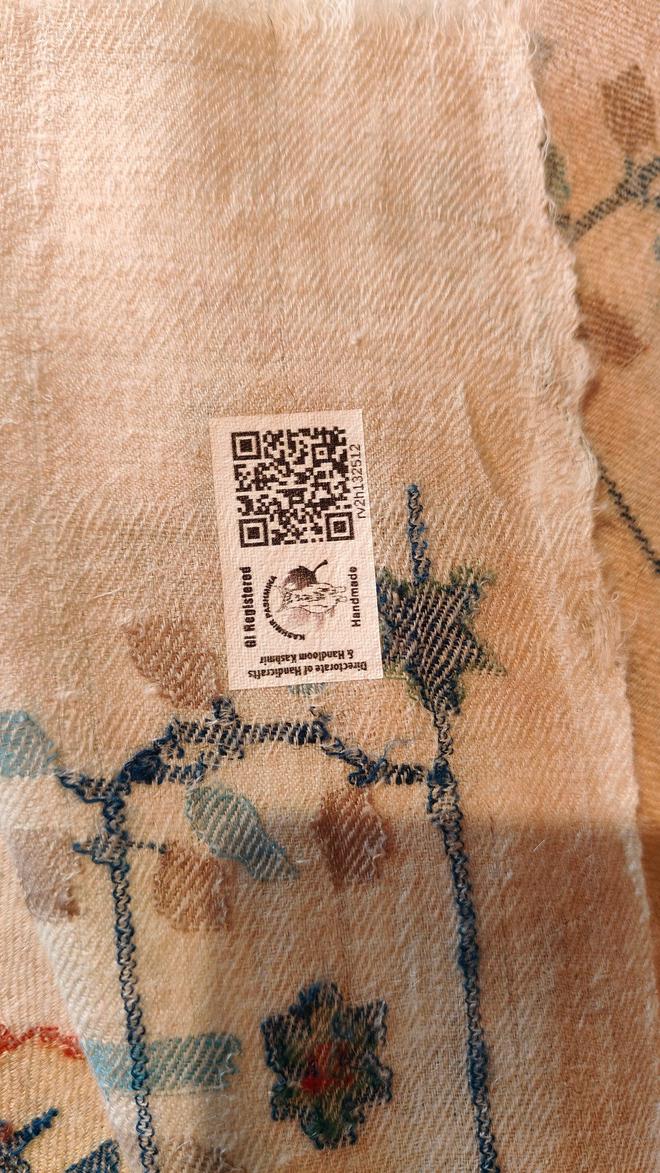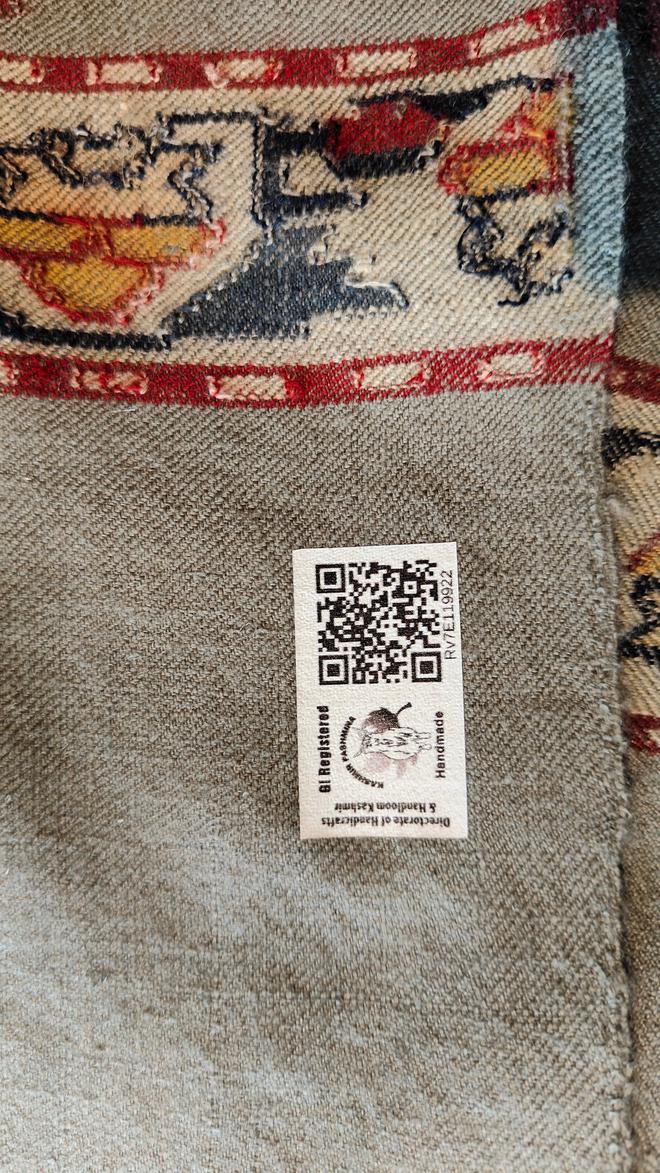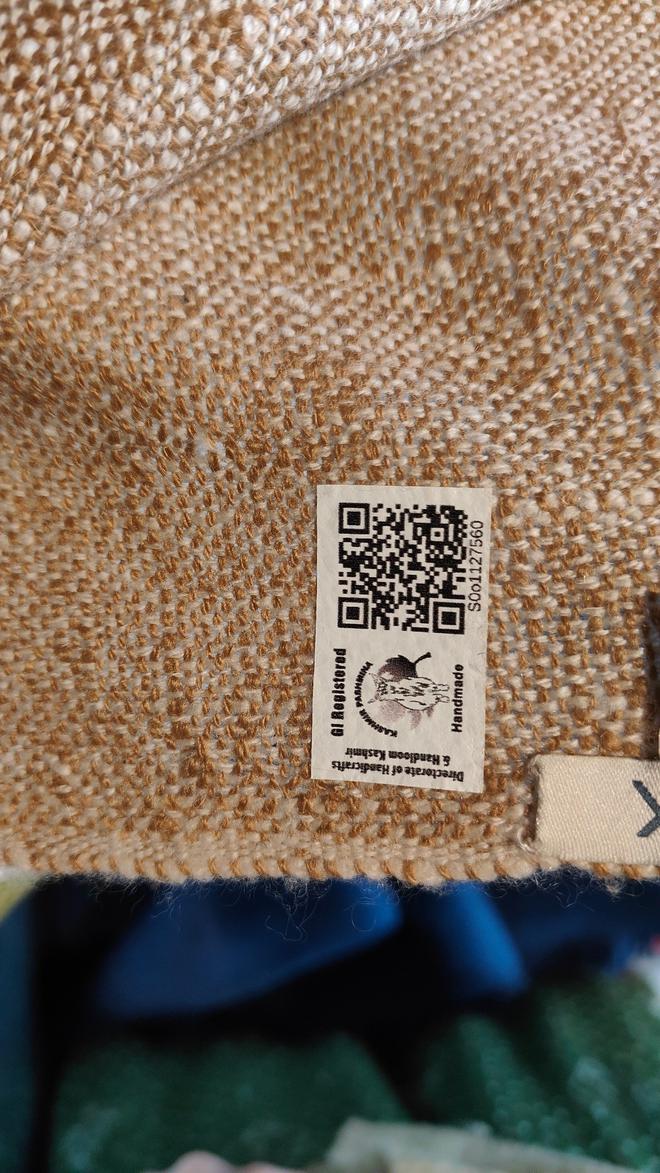Most houses in Srinagar’s Nawa Kadal area used to be abuzz with the whirring noise emanating from charkhas and spindles. Introduction of machines to bypass hand-driven processes for manufacturing shawls and carpets muted these houses, with hundreds of women artisans forced to discontinue. However, the move to tag handmade shawls and carpets with Geographical Indications (GI) labels is finally bringing women artisans back to charkhas and spindles.
Nazima Jan from Nawa Kadal in the old city was a third-generation pashmina artisan and quit pashmina spinning 10 years ago. “The hand-driven processes like dehairing, spinning, and weaving almost vanished in the past three decades due to the introduction of machines. I decided to shift my daughter from this age-old family profession to become a beautician,” Ms. Jan said.
The GI labels, however, are fast transforming the art scene in Kashmir. “GI tagging has been crucial for preserving and reviving traditional methods used in making shawls and carpets. It emphasises authentic hand-spun yarn. It safeguards traditional hand processes associated with these crafts, preserving their cultural significance and authenticity,” Mahmood Shah, Director, Handloom and Handicrafts, Kashmir, told The Hindu.
Also read | GI tags for over 17 products from Odisha, Arunachal Pradesh, West Bengal, and J&K
While shawls are made of pashmina, wool and silk are used to make carpets. Intricate hand-weaving techniques are used; for example, Kani shawls are woven by using needles made from cane or wood and not shuttles. All have traditional designs like ‘buta’ or paisley pattern. Both shawls and carpets were granted GI tags as registered products.

Evident change
The impact of GI tagging is evident from different clusters operating in the old city of Srinagar. Mujtaba Qadri, who owns the label, Me&K, has trained 500 women to enhance their spinning skills and collaborates with 1,500 women to produce hand-spun yarn for his products. Wages for women, spinning 10 threads with 10-inch yarns, is up to ₹2. So, on an average, women spinners earn ₹6,000 and weavers up to ₹20,000 per month.
“Most cashmere shawls today are made of machine-made yarn. It has negatively impacted the livelihood of hundreds of women artisans. The GI tag has helped restore the traditional process of shawl weaving. It has led to an increase in the number of women engaged in this work and their financial empowerment,” Mr. Qadri said.
Around 3.5 lakh artisans create handmade products in Kashmir, home to at least 16 unique crafts. Women once made up 47.4% of the workforce in the handicrafts sector in Kashmir, which has seen a dip in the past two decades, officials said. Unofficial figures suggest that over 10,000 women quit spinning pashmina by 2017.

Harbinger of hope
GI tagging has come as a harbinger of hope for women artisans. Mr. Qadri, who participates in exhibitions the world over, sees the GI tagging a rare window to restore the “lost splendour and unparalleled quality” of Kashmiri pashmina. GI has motivated local manufacturers to restore hand-driven processes and old techniques.
“Availability of low-cost imitations made by machines is posing a challenge. A GI tag, however, not only helps in ensuring the authenticity and quality of the products but also increases the earnings of the artisans, especially women,” Mr. Qadri said.
Introduced in 2013-14, the GI labelling of pashmina shawls has been slow. It saw a steady jump from 175 labels in 2014 to 5,430 in 2022-2023. According to official figures, the past one year saw a significant increase to 13,974 GI labels. A total of 30,059 pashmina shawls have been tagged since 2014.
Boost for exports
GI tagging has boosted exports of shawls, which have risen from ₹271.62 crore in 2019-2020 to ₹424.20 crore in 2022-2023. “In the current financial year, for three quarters, exports of ₹694.46 crore have already been clocked by Kashmir handicraft,” Mr. Shah said. This is the highest for the past five years as per data from the Handicrafts and Handlooms Department.
Mr. Shah said the GI tagging has conferred legal protection and the buyers overseas are much more confident today. “The tag has helped in differentiating authentic Kashmiri products from imitations. It has opened up new avenues for marketing and promotion, enabling Kashmiri carpets and shawls to reach a wider audience globally. It has played a pivotal role in elevating the visibility and competitiveness of Kashmiri carpets and shawls, leading to increased exports,” Mr. Shah said.

Kashmir’s seven crafts — including carpet, pashmina, sozni, kani shawl, walnut wood carving, khatamband, and papier mache — have been registered under the GI Act.
The Pashmina Testing and Quality Certification Centre evaluates the fibre diameter and other measurements. The Secure Authentication Fusion Labels provide quality certification. Similarly, the Indian Institute Of Carpet Technology, Srinagar, tests and certifies hand-knotted carpets.
“A pioneering QR code-based system for certification and labeling of hand-knotted carpets from Kashmir allows customers to verify authenticity using smartphones. The QR label provides various details about the product including the artisan, weaver, weight, average microns, etc.,” Mr. Shah said.

He said there are laid down criteria for GI tagging. “Purity of pashmina and hand-driven technique employed is established for tagging,” Mr. Shah said.
A registered artisan approaches the labs of the Pashmina Testing and Quality Certification Centre (PTQCC) and the Craft Development Institute (CDI) for certification. A pashmina shawl should be of 100% pure pashm, yarn obtained from high altitude goats inhabiting the upper reaches of Ladakh. The fibre has to be up to 16 microns and the final product handwoven by local artisans.
The tagging still is at its infancy stage and remains an uphill task. “At present, we are only tagging 1% of the total products we produce,” Mr. Qadri said.







